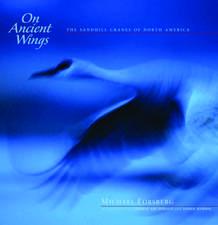The Comparative Physiology of the Pancreatic Islets: Zoophysiology, cartea 21
Autor August Epple, Jack E. Brinnen Limba Engleză Paperback – 15 dec 2011
Din seria Zoophysiology
- 15%
 Preț: 647.92 lei
Preț: 647.92 lei - 15%
 Preț: 638.76 lei
Preț: 638.76 lei - 15%
 Preț: 638.24 lei
Preț: 638.24 lei - 15%
 Preț: 641.38 lei
Preț: 641.38 lei - 15%
 Preț: 634.82 lei
Preț: 634.82 lei -
 Preț: 386.61 lei
Preț: 386.61 lei - 15%
 Preț: 636.94 lei
Preț: 636.94 lei - 15%
 Preț: 640.88 lei
Preț: 640.88 lei - 15%
 Preț: 635.47 lei
Preț: 635.47 lei - 15%
 Preț: 637.78 lei
Preț: 637.78 lei - 15%
 Preț: 640.88 lei
Preț: 640.88 lei - 15%
 Preț: 637.78 lei
Preț: 637.78 lei - 15%
 Preț: 638.24 lei
Preț: 638.24 lei - 15%
 Preț: 642.83 lei
Preț: 642.83 lei - 15%
 Preț: 634.68 lei
Preț: 634.68 lei - 15%
 Preț: 642.83 lei
Preț: 642.83 lei - 18%
 Preț: 999.60 lei
Preț: 999.60 lei - 15%
 Preț: 639.41 lei
Preț: 639.41 lei - 15%
 Preț: 638.43 lei
Preț: 638.43 lei - 15%
 Preț: 651.34 lei
Preț: 651.34 lei - 15%
 Preț: 638.57 lei
Preț: 638.57 lei - 15%
 Preț: 637.46 lei
Preț: 637.46 lei - 15%
 Preț: 637.59 lei
Preț: 637.59 lei - 15%
 Preț: 641.53 lei
Preț: 641.53 lei - 15%
 Preț: 636.80 lei
Preț: 636.80 lei -
 Preț: 386.22 lei
Preț: 386.22 lei - 15%
 Preț: 632.55 lei
Preț: 632.55 lei - 15%
 Preț: 695.19 lei
Preț: 695.19 lei -
 Preț: 401.24 lei
Preț: 401.24 lei - 18%
 Preț: 942.01 lei
Preț: 942.01 lei - 18%
 Preț: 945.30 lei
Preț: 945.30 lei - 15%
 Preț: 652.17 lei
Preț: 652.17 lei - 15%
 Preț: 632.70 lei
Preț: 632.70 lei - 15%
 Preț: 640.71 lei
Preț: 640.71 lei - 15%
 Preț: 644.30 lei
Preț: 644.30 lei - 15%
 Preț: 642.68 lei
Preț: 642.68 lei
Preț: 386.61 lei
Nou
Puncte Express: 580
Preț estimativ în valută:
73.98€ • 77.24$ • 61.23£
73.98€ • 77.24$ • 61.23£
Carte tipărită la comandă
Livrare economică 04-18 aprilie
Preluare comenzi: 021 569.72.76
Specificații
ISBN-13: 9783642831843
ISBN-10: 3642831842
Pagini: 236
Ilustrații: IX, 223 p. 13 illus.
Dimensiuni: 170 x 242 x 12 mm
Greutate: 0.38 kg
Ediția:Softcover reprint of the original 1st ed. 1987
Editura: Springer Berlin, Heidelberg
Colecția Springer
Seria Zoophysiology
Locul publicării:Berlin, Heidelberg, Germany
ISBN-10: 3642831842
Pagini: 236
Ilustrații: IX, 223 p. 13 illus.
Dimensiuni: 170 x 242 x 12 mm
Greutate: 0.38 kg
Ediția:Softcover reprint of the original 1st ed. 1987
Editura: Springer Berlin, Heidelberg
Colecția Springer
Seria Zoophysiology
Locul publicării:Berlin, Heidelberg, Germany
Public țintă
ResearchCuprins
1. Introduction.- 1.1 Landmarks in Islet Research.- 1.2 The Islet Organ: New Interpretations of an Old Gland.- 1.3 Terminology.- 2. The Evolution of the Islet Organ.- 2.1 Islet Hormones Before the Islet Organ.- 2.2 Extrapancreatic Origin of Islet Hormones in Vertrebrates.- 2.3 Early Interactions in Islet Evolution: Islet Organ, Protopancreas, Liver, and Their Vascular Links.- 3. Ontogeny of the Gnathostome Pancreas Tissues.- 4. Comparative Cytology of the Islet Organ.- 4.1 Agnatha.- 4.2 Gnathostomes.- 4.3 Islet Structure: Phylogenetic Trends.- 5. The Exocrine Pancreas.- 6. Insulo-Acinar Interactions.- 7. Nervous Regulation of Islet Functions.- 7.1 Pathways.- 7.2 Control of Islet Hormone Secretion.- 7.3 Conclusions.- 8. Hormonal Control of Pancreatic Islet Functions.- 8.1 Adrenomedullary-Insular Interactions.- 8.2 The Entero-Insular Axis.- 9. Functional Strategies of the Islet Organ.- 9.1 Multiple Secretions.- 9.2 Multiple Routes of Communication.- 9.3 Local Interactions of Islet Cell Secretions: Terra Incognita.- 10. Insulin.- 10.1 Molecular Structure and Related Compounds.- 10.2 Antigenicity, Assays, and Endogenous Titers.- 10.3 The Physiology of Insulin Before Birth.- 10.4 The Physiology of Insulin in Postnatal Vertebrates.- 11. Glucagon.- 11.1 Molecular Structure and Related Compounds.- 11.2 Antigenicity, Assays, and Endogenous Titers.- 11.3 Glucagon Before Birth.- 11.4 The Physiology of Islet Glucagon in Postnatal Vertebrates.- 12. Pancreatic Polypeptide.- 12.1 Molecular Structure and Related Compounds.- 12.2 PP Antigenicity, Assays, and Endogenous Titers.- 12.3 The Physiology of Islet PP.- 12.4 Conclusions.- 13. Somatostatin.- 13.1 Molecular Structure and Related Compounds.- 13.2 Antigenicity, Assays, and Endogenous Titers.- 13.3 The Physiology of Islet Somatostatin.- 13.4 Conclusions.- 14. Summary and Perspectives.- References.- Subject and Species Index.










